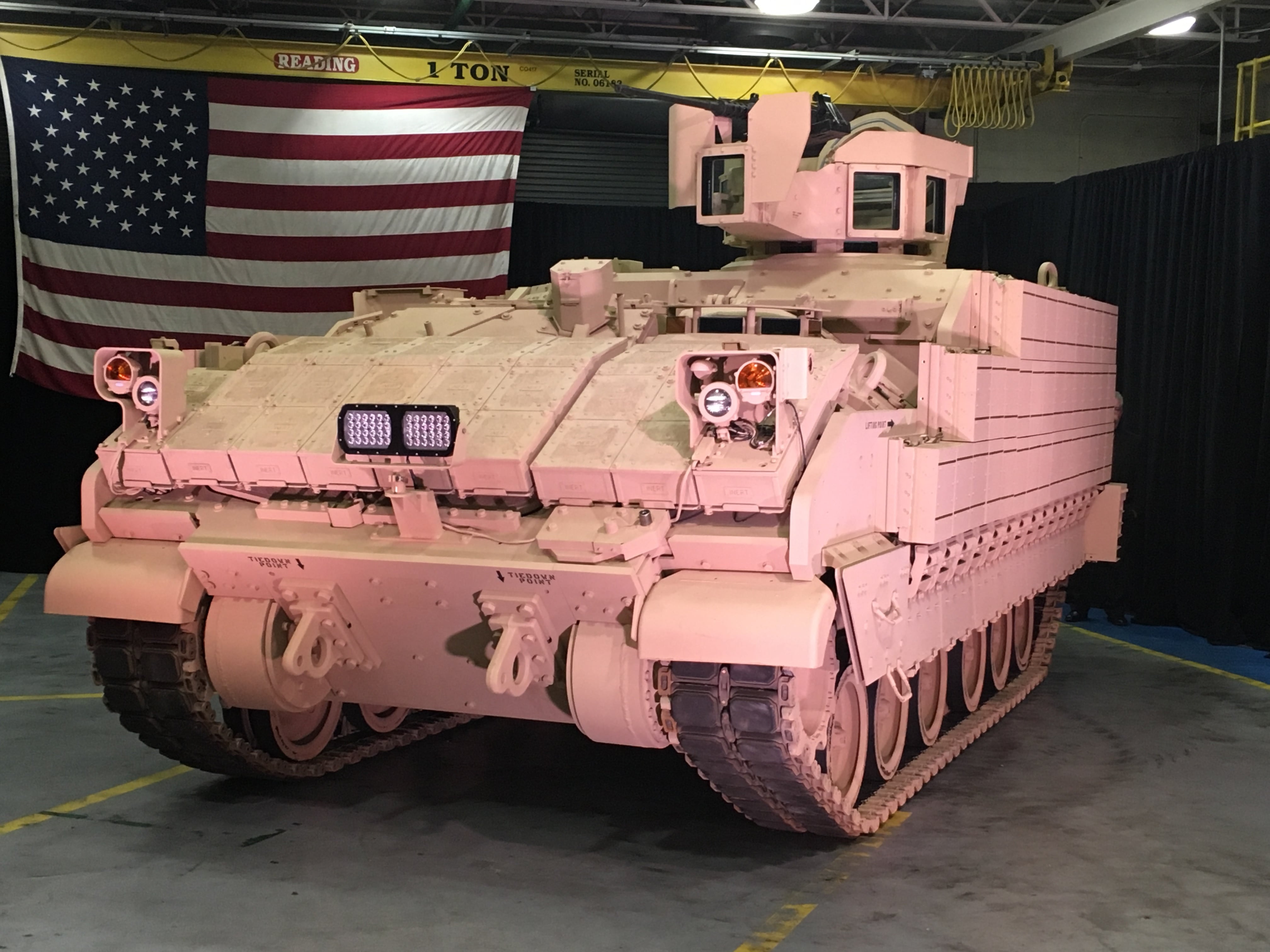YORK, Penn. – BAE Systems rolled out its first general purpose variant of the Armored Multi-Purpose Vehicle (AMPV) prototype for the US Army Thursday in a ceremony at its facility in York, Pennsylvania, just two years after being awarded the contract to build 29 vehicles in five variants.
It was the second rollout ceremony in a week for the company, which presented its Amphibious Combat Vehicle offering to the US Marine Corps Tuesday. BAE is competing with SAIC to win a production award for ACV.
The original AMPV award was for $382 million but the contract provides an optional low-rate initial production phase to produce 289 vehicles that would bump the value up to $1.2 billion.
The AMPV will replace M113 armored personnel carriers, first fielded in 1960. The M113 has been used to resupply, conduct battle command functions, deliver organic indirect fires, provide logistics support and medical treatment and perform medical and casualty evacuation for armored brigade combat teams (ABCT). The obsolete vehicle can no longer keep pace with the M1 Abrams and the M2/M3 Bradley Infantry Fighting Vehicle resident in those formations.
Maj. Gen. David Bassett, the Army’s program executive officer for ground combat systems, applauded BAE Systems at the ceremony for moving through the design and prototyping phase of vehicle development with flexibility and at a record pace.
Bassett told reporters following the ceremony that in the past two years as the Army and BAE designed the five AMPV variants, some requirements were adjusted, adding some features or taking some things out.
For one, the Army decided to add an additional seat in the mission command variant in the back in order to integrate all of the advanced network and communications that might be forthcoming as the Army evolves its network. The change came at an additional cost, but the Army felt it was a tradeoff it had to make.
Some tweaks could still come down the pipeline, Bassett added. The Army, for example, is looking at the gunner protection kit on the top of the vehicle because it is a "fairly costly" component and there are some "very technical requirements," therefore, "we are looking to see how we might adjust those for what could be a substantial reduction in cost to the vehicle."
The Army will now allow for six months of contractor tests, Bassett said, and will then take the AMPV into government testing for a year before holding a limited user test.
The service is looking at the possibility of streamlining some of the testing schedule based on test results of the Bradley Infantry Fighting Vehicle Engineering Change Proposal 2 vehicles because of the commonality between Bradley and AMPV in terms of its automotive structure, Bassett said.
BAE Systems also manufactures the Bradley and the design for AMPV derives from the tracked fighting vehicle.
The Army could also consider speeding up the rate of production once the engineering and manufacturing development phase comes to a close. The current rate that is budgeted is 160 vehicles a year which fields one and a half brigades.
"I think we’ve got the capacity to go faster than that," Bassett said, but it all depends on resourcing and need. "It’s a matter of when do we have enough confidence in the readiness of this so that we don’t have to go retrofit a whole bunch of changes later."
But if the opportunity to accelerate makes sense, Bassett said, it would result in savings. "We have run some drills on if you could do two brigades instead of a brigade and a half a year, how much could you save? And the answer is literally billions of dollars could be saved if additional resources were made available and we were able to ramp up production," he said.
While AMPV is slated to replace 2,897 M113 vehicles for the Army’s ABCTs, there are still 1,922 M113s in use supporting Echelons Above Brigade (EAB) that the service eventually wants to replace.
General Dynamics Land Systems withdrew itself from the initial competition to replace the ABCT M113s because it argued the Army unfairly favored the tracked Bradley derivative from BAE in its requirements for AMPV.
GDLS may want to get back into the ring once the Army signals its plan to replace those M113s, but, according to Bassett, a replacement has not been resourced in the Army’s budget within its five-year plan. He said the Army did just complete an analysis of alternatives for what could be done for EAB M113s and has submitted the report to Congress.
"It’s a little too early for me to announce any plans," he said. " There may be experimentation, things we are looking at to make sure we understand it a little better, but the basic study has been done and I think the Army is struggling with how we are going to resource that."
Jen Judson is an award-winning journalist covering land warfare for Defense News. She has also worked for Politico and Inside Defense. She holds a Master of Science degree in journalism from Boston University and a Bachelor of Arts degree from Kenyon College.





